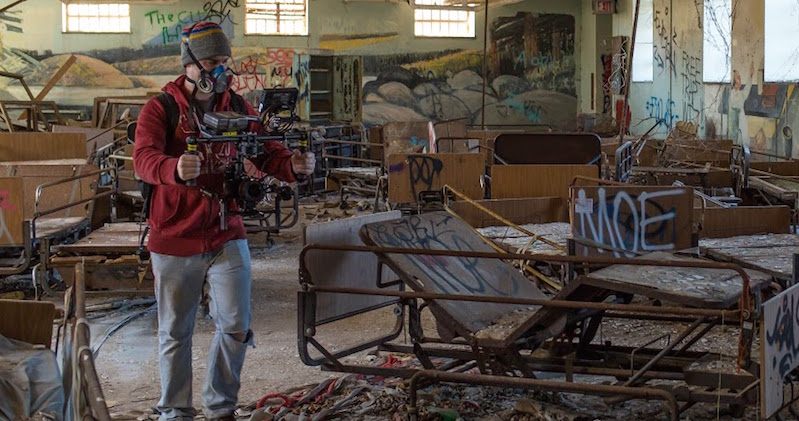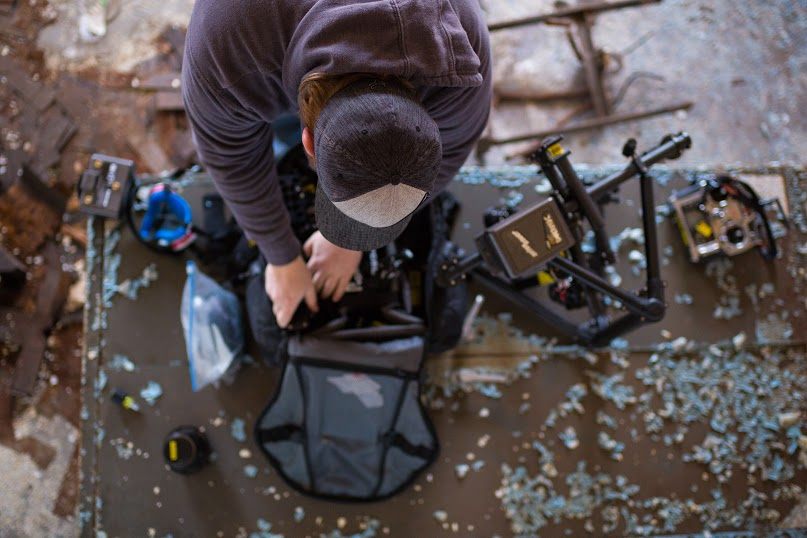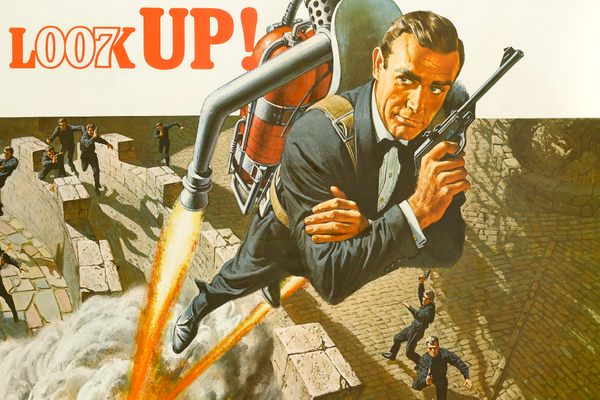Here’s What Happens When You Bring $30,000 of Video Gear to an Abandoned Asylum

Inside the psychiatric center (Photo: Courtesy of Project Senium)
It was Thursday afternoon, on the second to last day they had planned for the shoot, and most of the crew was out sick. But Joe Trimble and Nicolas Levasseur had been at the abandoned psychiatric center at sunrise, and now they were trying to get on top of one of the buildings.
There was a hatch, maybe 15 feet up, that they wanted to get themselves and their gear through. They had found a junked-up firehose on the ground, and tied it to their loaded-up MoVI stabilizing rig. As the gear lifted into the air, Trimble realized: We’re hauling $15,000 worth of gear up on a firehose that’s at least 20 years old. What are we doing?
Normally, Trimble, Levasseur and their friend and colleague Jesse Miller spend their time making films in places where they’re not putting their gear at quite as much risk—and where they’re not trespassing to begin with. But with Project Senium, they wanted to use their production skills to push the boundaries of urban exploration video. This wasn’t going to be one of those shaky tours made with a phone camera or a GoPro. “The goal was to try new things that weren’t necessarily being done,” says Trimble. Using drones and a camera with what Gizmodo calls “mind-boggling low light performance,” this is what they created:
Project Senium from Project Senium on Vimeo.As urban exploration has become more popular, the frontier for what’s cool and impressive has moved. There’s a premium on discovering places no one’s been before, and where 10 years ago, a few people were publishing photos of urban explorer (“urbex” for those in the know) adventures, now Instagram’s made moody shoots of crumbling #abandonedplaces commonplace.
Increasingly, too, the video footage coming out of these places is more ambitious and made with nicer gear. It helps that the technology’s getting better and that great video cameras and drones are now relatively affordable. But, with so many more people undertaking the same sort of adventures, there’s also a push to do something different.
The first shot of Project Senium’s film, for instance, is of the tallest building on the property, the Kings Park Psychiatric Center. But the team carefully planned the second shot to pay homage to a shot by the photographer Tim Kirsch, who’s been documenting abandoned places at his site Opacity for years.
“We started following him, 8 or 10 years ago, and he had this really iconic photo of that main building,” says Levasseur. “That stuck in our heads so long that we wanted to make a shot that looked just like it, but be a moving, cinematic shot. We wanted to take what he did, kind of give an ode to him, and take it a step further.”

During production, the gear was broken down and reassembled. (Photo: Courtesy of Project Senium)
Getting all their gear into the site, though, was a production in itself. They would break down the gear, load it into a few backpacks, make their way to the location, and reassemble everything they needed. Friends helped—both by carrying gear and watching it while the actual shooting went on.
At this point, the center’s relatively well trafficked, sometimes by people intent on messing up the place. One time, before the actual shoot, Levasseur was there with five or six people, the MoVI stabilizer and some other expensive gear. His group had gone to a different part of the building, while he stayed behind to talk to a couple of people he’d met previously online. While he was standing there, with maybe thirty grand worth of gear, a group of eight guys, on with a golf club in his hand, came through. “I can defend myself against two people, but if these guys wanted to take my gear and run off, I was going to be in a bad spot,” says Levasseur. “We were in a big abandoned building, we were trespassing to begin with, and if someone did happen, we couldn’t just go to the cops.”
Besides the threat from less-than-friendly humans, the building itself posed a risk. The dust and asbestos coated the gear: afterwards, they sent out lens to be professionally cleaned. At one point, part of the ceiling—something heavy, Levasseur says—came down and hit someone on the shoulder.
But to the Project Senium team, it was worth it. As urbex becomes more popular, their sense is that it might accelerate the destruction of this place—both because some people want to do more than just explore and because more traffic puts more pressure on authorities to simply tear the buildings down. The film they made is a document of a facility that may be gone. “If in five years, the whole thing is leveled, you’ll be able to show: this was all here,” Trimble says. “It was real.”














Follow us on Twitter to get the latest on the world's hidden wonders.
Like us on Facebook to get the latest on the world's hidden wonders.
Follow us on Twitter Like us on Facebook